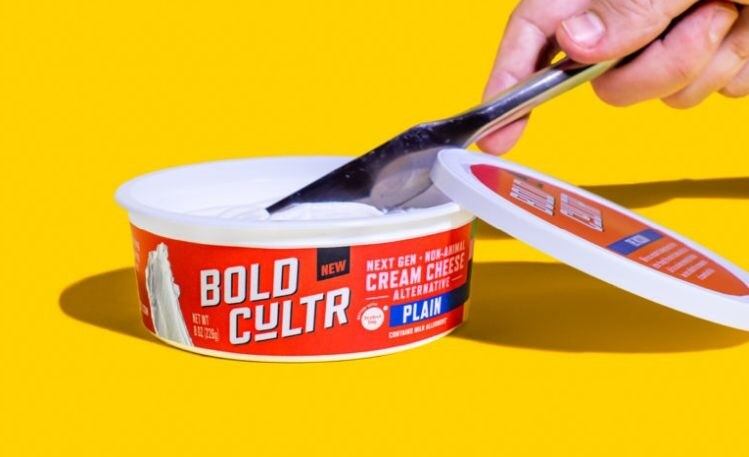According to non-profit consumer research organization IFIC, four in 10 Americans (39%) admit environmental sustainability has an impact on their grocery-buying decisions. A 2020 study1 of consumer perceptions showed that minimal carbon footprint or greenhouse gas emissions was one of the top priorities for consumers of dairy products, but factors such as animal welfare, minimal processing and eco-friendliness were of even greater importance.
According to McKinsey & Company, environmental values are increasingly influencing consumer behaviour, particularly among younger consumers – for 53% of millennials, reducing their environmental impact is an ‘important’ or ‘extremely’ important goal in making food-purchasing choices. Responding to these trends, 47% of dairy processors with a sustainability strategy in place have reported consumer demand was their main motivation in investing in sustainability strategies, outweighing both investor and regulatory pressure.
But an ING investigation from 2022 showed that of the leading European and American dairy and meat companies that had publicly announced their emissions reductions targets, only 8% had disclosed their scope 3 emissions, which include indirect emissions (i.e. not owned or controled by the organization) from the value chain. Hayley Campbell-Gibbons, head of sustainability at Kite Consulting, told us that the logic of wanting to reduce scope 3 emissions ‘may be simple, but for businesses of any size, the execution can be anything but’.
“Knowing where to start in developing a corporate sustainability plan, measuring your scope 1, 2 and 3 emissions and setting reduction targets is a daunting and complicated task. That said, for dairy companies approaching scope 3 needn’t be difficult.
"Measuring the carbon associated with the milk purchased, alongside other significant categories – such as logistics and transport – are the most important areas to focus on."
"For most smaller companies without in-house expertise, bringing in external sustainability expertise to build a plan and guide the company through it all is probably the best solution. There is a large amount of pre-competitive space on sustainable best practice and support that dairy companies can tap into too.”
Scope 3 emissions are also important in coming up with meaningful net-zero targets down the line – as net-zero needs to encompass all three emission scopes. “Net zero targets are end goal of scope 3 reduction targets and efforts,” Campbell-Gibbons explained. “What’s crucial is that any company’s net zero target must include all emissions scopes. The vast majority of any large food company’s emissions lie in their scope 3, so any target that doesn’t seek to address this is largely pointless. A deep dive into corporate sustainability strategies reveals that not all net zero targets are as good as they sound.”
Science-based targets - particularly those aligned with the Science Based Targets initiative (SBTi) that verifies if corporate sustainability targets are in line with climate science – have gained popularity among CPGs in recent years. But while large corporations are in a better position to afford the investment, smaller suppliers are increasingly under pressure to measure their sustainability performance. Campbell-Gibbons: “It is important to recognise that sustainability is an investment for a business, not purely a cost. Customers have increasingly high expectations in this area and meeting those sustainability requirements gives your company market insurance. That said, you don’t need to have an SBTi target to measure and reduce emissions. I’d argue that SBTi was designed to accelerate the rate and scale of emissions reductions of the private sector, but only for very large corporations. Not necessarily the smaller players that are part of another company’s supply chain.
“The daunting feeling that dairy companies sometimes have about sustainability isn't always helped by retailers and others asking suppliers for targets, measures and standards that aren't necessarily appropriate for them. One example is asking smaller companies to set SBTi targets, or to be net-zero, when it’s not necessary to do so. Akin to using a sledgehammer to crack a nut!"
“There is now a dedicated SBTi route for smaller businesses that offers a more straightforward, less costly, less onerous approach to measuring emissions and setting emissions targets, which is helpful for those being asked to set one.”
Indeed, SBTi introduced a new route for SMEs, which bypasses the initial stage of committing to set a science-based target and the standard target validation process. Instead, firms can choose to comply to one of pre-defined target options, with the near-term option not requiring firms to set scope 3 emissions targets (though they must ‘commit’ to measure and reduce these, too). Near-term targets cover at least five years, while long-term targets can run up to 2050.
SBTi is also developing commodity-specific pathways – so-called FLAG projects – designed to inform companies how much and how quickly they need to reduce land-related emissions. Whether these projects would help with accountability and consistency in reporting is ‘too early to say’ according to Campbell-Gibbons, since most companies are currently evaluating these new pathways.
So, what of carbon neutrality? Unlike net-zero, carbon neutrality refers to balancing out an organization's carbon footprint, i.e. removing the amount of carbon that's been generated, including through offsetting and insetting projects. As we increasingly hear about carbon-neutral dairy products, what this means is that the manufacturer has reduced the carbon emissions associated with that product’s production and offset the rest, e.g. through buying carbon credits. “Any company can become carbon neutral, or create a carbon neutral product by calculating the emissions associated with that part of the business and offsetting the equivalent amount of carbon using a verified offset scheme,” Campbell-Gibbons explained. “There are several companies offering a certified portfolio of offset projects at various prices. Net zero itself is ultimately an offset of any residual carbon by 2050, after all reduction efforts have been made.”
As dairy alternatives gain popularity, protein diversification has become an important lever for small and large dairy companies looking to reduce greenhouse gas emissions - and appeal to climate-conscious consumers at the same time. For some companies - such as France’s Bel Group, who is aiming to offer 50% plant-based and fruit products and 50% dairy by 2030 - this type of strategy is crucial to achieving their long-term climate commitments. According to Campbell-Gibbons, this strategy remains ‘controversial’ but is also ‘the most obvious way’ to avoiding emissions from agriculture. “Protein diversification is a major and controversial sustainability strategy," she told us. "Several companies have committed to switching up to 50% of their sourcing away from animal to plant-based proteins, starting now.
"This represents the most unconcealed and conscious supply chain shift away from meat and milk that the industry has ever experienced."
"With dairy representing such a large proportion of a food company's carbon footprint, and all companies required to remove greenhouse gases by 2050 or earlier, there is a drive to avoid emissions from agriculture wherever feasible. Switching sourcing from proteins to plants is the most obvious way to achieve this.”
Whatever the means, it’s clear that being climate-driven remains an important factor for dairy companies. “Most of the larger dairies have set net zero targets, whether or not they are SBTi-validated. Big or small though, sustainability is no longer a choice in the dairy industry.
“Having environmental credentials will be a prerequisite for much of business. The worst thing you can do is to put sustainability in the ‘too difficult’ box," Campbell-Gibbons concluded. “Demonstrating a commitment to sustainability and delivering a reduction in GHG emissions gives your customers confidence that dairy products aren’t an environmental problem for them to worry about. In fact, with the data, knowledge and expertise, dairy businesses hold on the sector’s sustainability potential, they are in a powerful position to deliver the carbon reduction their customers are relying on.”
The sustainability targets of the top 5 dairy companies by turnover
Lactalis Group is working to develop 'roadmaps' for cutting GHG emissions associated with its milk supply products, representing around 80% of its total emissions (scopes 1-3). 11 countries representing 70% of the group's milk collection are mobilized and aim to develop these roadmaps by the end of 2023. the SBT website lists it as 'committed' on near-term actions and net-zero. companies that do not submit targets within 24 months of their commitment will be identified in the dashboard as 'commitment removed'.
Dairy Farmers of America's GHG footprint comprises 2% scope 1 and 2 emissions and 98% scope 3 (indirect emissions in the supply chain). Of the 98%, 28% comes from enteric emissions, 26% from manure, 23% from feed, 9% from transportation and distribution, 8% from end of life of sold products and 4% from energy. The first US dairy co-op to set out science-based target and is working to reduce emissions across the supply chain by 30% by the end of 2030 (from a 2018 base year) and net zero or better by 2050. On SBT's dashboard, the commitment to net-zero has not yet been listed.
Nestlé has committed to reducing absolute scope 1, 2 and 3 GHG emissions 20% by 2025 and 50% by 2030 from a 2018 base year. Nestlé also commits to increase annual sourcing of renewable electricity from 40% in 2019 to 100% by 2025.
Scope 3 emissions make up almost 95% of its overall emissions and come from activities in its supply chain, including sourcing and use of sold products. The company predicts its scope 3 activities would remove almost two thirds of GHG emissions by 2030, meaning that 46.2 million tons of CO2e will be emitted instead of 133.8 million tons in a 'business as usual' scenario.
Danone's 2030 reduction targets include 47.2% reduction of scope 1 and 2 energy and industrial GHG emissions; these were around 4% of all GHG emissions in 2022. The company has pledged to reduce scope 3 emissions energy and industrial GHG emissions, e.g. from purchased goods and services, fuel and energy-related activities, upstream transportation and distribution, waste generated in operations, downstream transportation and distribution and end of life treatment of sold products by 42% by 2030. These were 32% of all emissions in 2022. The company plans to reduce scope 1 and 3 Forest Land and Agriculture (FLAG) emissions by 30.3% by is turning to regenerative agriculture actions, specifically reduction of methane emissions, zero deforestation and conversion from animal feed supply chains, and soil carbon sequestration. Danone has pledged to have zero net carbon emissions by 2050, rather than achieve net zero across all emissions.
Yili targets carbon neutrality across its industrial chain by 2050. It plans to reduce 'carbon emission intensity' - which means the amount of CO2 emitted per unit of economic output or activity, rather than the volume of emissions removed - from scope 1 and 2 activities by more than 50% by 2030 from a 2012 base year. The company is listed as 'committed' on SBT's dashboard, which means it's yet to submit official targets.
Sources:
Consumer perception of the sustainability of dairy products and plant-based dairy alternatives
Schiano, A.N., et al
Published: December 2020, Journal of Dairy Science
DOI: 10.3168/jds.2020-18406




